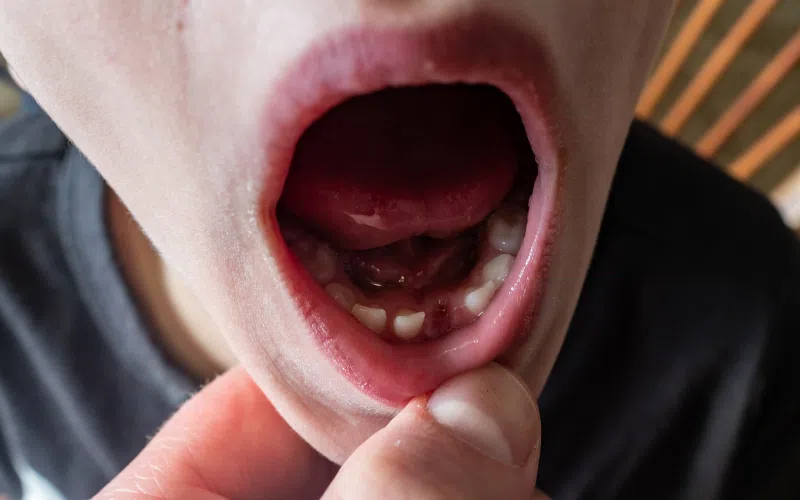Brentwood: (615) 235-1966

Can Dry Sockets Be Deadly?
Brentwood, TN

Dry sockets, also known as alveolar osteitis, are a common complication following tooth extraction. While they are not typically life-threatening, untreated dry sockets can lead to serious health issues. Understanding the risks and knowing how to prevent and treat dry sockets is essential for anyone undergoing tooth extraction. In this blog post, we’ll explore the question, “Can dry sockets be deadly?” and provide important information to help you protect your oral health.
What Are Dry Sockets?
After a tooth is extracted, a blood clot forms in the socket to protect the underlying bone and nerves as the healing process begins. However, in some cases, this blood clot can become dislodged or dissolve too early, leaving the socket exposed. This condition is known as a dry socket or alveolar osteitis. Several factors can increase the risk of developing dry sockets, including:
Trauma during Tooth Extraction: Rough or difficult tooth extractions can increase the likelihood of the blood clot becoming dislodged.
Poor Oral Hygiene: Inadequate oral hygiene practices can lead to the accumulation of bacteria in the mouth. As a result, it increases the risk of infection and dry socket formation.
Smoking: Smoking can impair blood flow and interfere with the healing process, making individuals who smoke more susceptible to dry sockets.
Use of Oral Contraceptives: Hormonal changes associated with the use of oral contraceptives can affect the body’s ability to heal, increasing the risk of dry sockets.
History of Dry Sockets: Individuals who have previously experienced dry sockets are more likely to develop them again.
Wisdom Tooth Extraction: Wisdom teeth, or third molars, are more prone to dry sockets due to their location at the back of the mouth. This can make it more difficult to clean properly.
Signs and Symptoms of Dry Sockets
Severe, Persistent Pain: The most notable symptom of a dry socket is intense pain that often begins a few days after the tooth extraction. The pain may radiate to the ear, jaw, or neck on the same side of the face. It is typically described as throbbing or pulsating and can be resistant to over-the-counter pain medications.
Empty-looking Socket: Upon examination, the socket where the tooth was extracted may appear empty or dry, lacking the blood clot that is necessary for proper healing.
Bad Breath and Unpleasant Taste: Due to the exposure of bone and tissue in the socket, bacterial growth can occur, leading to bad breath (halitosis) and a foul or unpleasant taste in the mouth.
Swollen Lymph Nodes: In some cases, the lymph nodes in the neck or jaw may become swollen and tender to the touch.
Difficulty Opening Mouth: The pain and swelling associated with a dry socket can make it challenging to open the mouth or chew comfortably fully.
Fever: In severe cases where infection is present, a low-grade fever may develop.
Delayed Healing: The socket may take longer to heal than expected, with persistent pain and discomfort beyond the normal healing period.
Radiating Pain: The pain from a dry socket may not be localized to the extraction site but can radiate to other parts of the head and neck.
Can Dry Sockets Be Deadly?
Dry sockets, though not inherently life-threatening, can potentially lead to serious complications if left untreated. When a blood clot fails to form properly or is dislodged prematurely after a tooth extraction, the underlying bone and nerves are exposed. This exposes them to external elements like air, food particles, and bacteria, which can lead to infection and inflammation. Here are some of the risks of untreated dry sockets:
Infection: The exposed bone and nerves are susceptible to bacterial infection. This can cause localized inflammation (known as osteitis) and spread to surrounding tissues if not treated promptly.
Osteomyelitis: In severe cases, untreated infection can lead to osteomyelitis, a serious condition characterized by inflammation and infection of the bone. Osteomyelitis requires aggressive treatment, including antibiotics and sometimes surgery, to prevent further complications.
Sepsis: In rare cases, severe infections from untreated dry sockets can lead to sepsis. This is a life-threatening condition that occurs when the body’s immune response to infection triggers a widespread inflammatory response. Sepsis can lead to organ failure and death if not treated promptly.
Chronic Pain: Dry sockets can cause prolonged and severe pain that can interfere with daily activities and quality of life if left untreated. Managing pain and addressing the underlying cause of the dry socket is essential for long-term relief.
Preventing Dry Sockets
After a tooth extraction, taking proper care of the extraction site can significantly reduce the risk of developing dry sockets. Here are some essential tips to help prevent this painful condition and promote optimal healing:
Follow Post-Extraction Care Instructions: Your dentist will provide you with specific instructions on how to care for the extraction site. It’s crucial to follow these instructions carefully to ensure proper healing.
Avoid Smoking and Tobacco Products: Smoking and using other tobacco products can interfere with the healing process and increase the risk of developing dry sockets. It’s best to avoid these substances until the extraction site has fully healed.
Avoid Using Straws: Using a straw can create suction in the mouth, which can dislodge the blood clot and increase the risk of dry sockets. Drink from a cup instead until the extraction site has healed.
Limit Physical Activity: Strenuous physical activity can increase blood flow and pressure in the mouth, which can dislodge the blood clot. Avoid intense exercise for a few days after the extraction.
Eat Soft Foods: Stick to a soft diet for the first few days after the extraction to avoid putting pressure on the extraction site. Opt for foods like yogurt, mashed potatoes, and smoothies.
Maintain Good Oral Hygiene: Gently brush your teeth and rinse your mouth with warm salt water or an antimicrobial mouthwash to keep the extraction site clean and free of debris. Avoid vigorous rinsing or spitting, as this can also dislodge the blood clot.
Attend Follow-Up Appointments: Be sure to attend any follow-up appointments scheduled by your dentist. They will monitor your healing progress and address any concerns or complications that may arise.
Stay Hydrated: Drink plenty of water to stay hydrated, but avoid using a straw, as mentioned earlier.
Treating Dry Sockets
If you suspect you have a dry socket, it’s essential to seek prompt treatment from your dentist to alleviate symptoms and prevent further complications. Here are common treatments your dentist may recommend:
Cleaning the Socket: Your dentist will gently clean the socket to remove any debris or food particles that may be causing discomfort or preventing healing.
Medicated Dressings: Your dentist may apply a medicated dressing to the socket to promote healing and reduce pain. These dressings can also help protect the exposed bone and nerves while the socket heals.
Pain Medication: Over-the-counter pain relievers may be recommended to help manage the pain associated with a dry socket. Your dentist may also prescribe stronger pain medication if needed.
Antibiotics: If there are signs of infection, such as swelling or pus, your dentist may prescribe antibiotics to help clear the infection and prevent it from spreading.
Steroid Medications: In some cases, your dentist may prescribe steroid medications to reduce inflammation and pain associated with a dry socket.
Irrigation: Your dentist may use a special rinse or irrigation solution to clean the socket thoroughly and remove any bacteria or debris.
Surgical Intervention: In severe cases where other treatments have not been effective, surgery may be necessary to remove any remaining debris or infected tissue from the socket. This procedure is usually done under local anesthesia.
While dry sockets themselves are not typically deadly, they can lead to serious complications if left untreated. Understanding the risks and knowing how to prevent and treat dry sockets is essential for anyone undergoing tooth extraction. By following your dentist’s instructions and seeking prompt treatment if you suspect a dry socket, you can protect your oral health and avoid potential complications.


